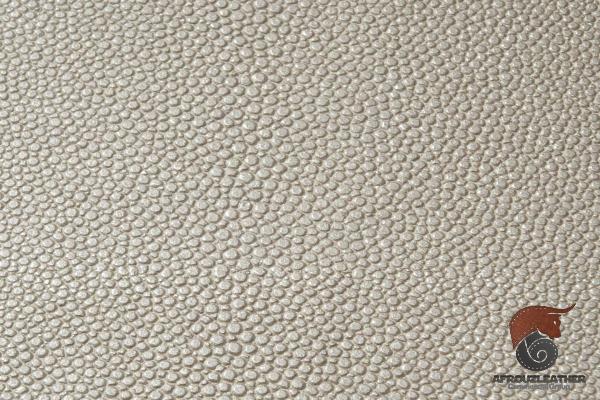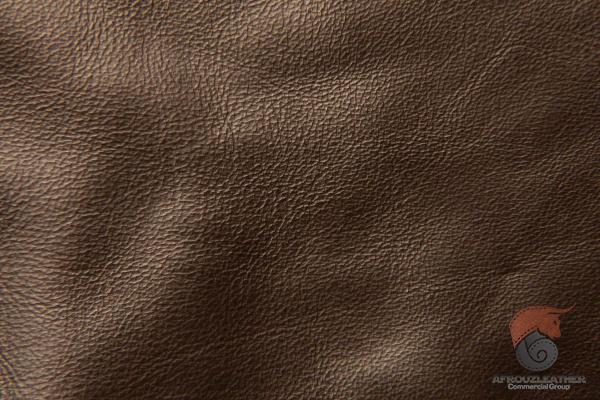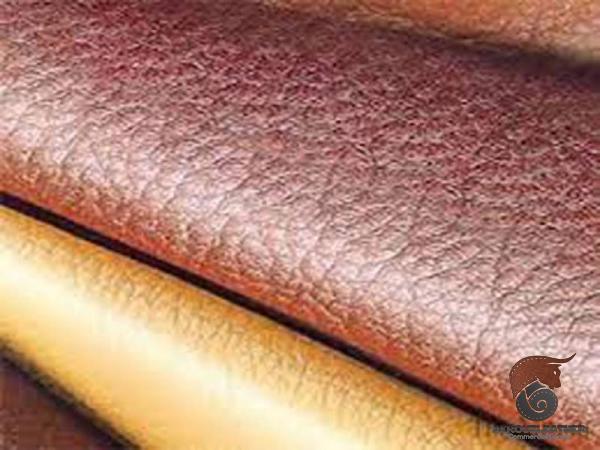Leather is a timeless and highly versatile material that has been used for centuries in the production of various products, from footwear and accessories to furniture and upholstery. However, before leather can be transformed into a finished product, it must first undergo a series of preparations and treatments, including the crucial step of finishing. The finishing process plays a vital role in enhancing the quality, appearance, and durability of raw leather sheets. In this article, we will delve into the specifics of finishing raw leather sheets, exploring the various methods and techniques used in the industry. By understanding these processes, manufacturers, craftspeople, and consumers can make informed decisions when selecting and working with finished leather materials. 1. Importance of Finishing Raw Leather Sheets: Finishing raw leather sheets is an essential step in the leather production process that involves the application of various treatments to enhance the attributes of the material. The finishing process not only improves the leather’s visual appeal but also adds durability and functional properties to the final product. Raw leather, in its natural state, may be vulnerable to moisture, staining, and scratches; finishing treatments help protect against these factors, making the leather more robust and long-lasting.
leather
 2. Preparation for Finishing: The process of finishing raw leather begins with thorough preparation, which typically involves cleaning and degreasing the surface to remove dirt, oils, and other impurities. This step ensures that the finishes can penetrate the leather uniformly and adhere properly. Various methods, such as washing, solvent cleaning, and mechanical scrubbing, can be employed to achieve this. 2.1 Washing: One common method of cleaning raw leather prior to finishing is washing. Used primarily for vegetable-tanned leathers, washing involves immersing the leather in a mild soap solution and agitating it gently to remove dirt and excess oils. However, caution must be exercised when washing leather, as excessive water or rough handling could cause shrinkage or deformations. 2.2 Solvent Cleaning: Solvent cleaning is another effective technique for preparing raw leather sheets. This method involves using organic solvents, such as mineral spirits or naphtha, to dissolve and remove oils, waxes, and other contaminants from the leather’s surface. Solvent cleaning is particularly suitable for oil-tanned leathers that are resistant to water but sensitive to excessive moisture. 2.3 Mechanical Scrubbing: Mechanical scrubbing is a mechanical process that involves using brushes or abrasive pads to physically scrub the surface of the leather sheets. This method helps remove stubborn stains, ingrained dirt, or residual finishes. The intensity of mechanical scrubbing should be carefully controlled to avoid damaging the leather.
2. Preparation for Finishing: The process of finishing raw leather begins with thorough preparation, which typically involves cleaning and degreasing the surface to remove dirt, oils, and other impurities. This step ensures that the finishes can penetrate the leather uniformly and adhere properly. Various methods, such as washing, solvent cleaning, and mechanical scrubbing, can be employed to achieve this. 2.1 Washing: One common method of cleaning raw leather prior to finishing is washing. Used primarily for vegetable-tanned leathers, washing involves immersing the leather in a mild soap solution and agitating it gently to remove dirt and excess oils. However, caution must be exercised when washing leather, as excessive water or rough handling could cause shrinkage or deformations. 2.2 Solvent Cleaning: Solvent cleaning is another effective technique for preparing raw leather sheets. This method involves using organic solvents, such as mineral spirits or naphtha, to dissolve and remove oils, waxes, and other contaminants from the leather’s surface. Solvent cleaning is particularly suitable for oil-tanned leathers that are resistant to water but sensitive to excessive moisture. 2.3 Mechanical Scrubbing: Mechanical scrubbing is a mechanical process that involves using brushes or abrasive pads to physically scrub the surface of the leather sheets. This method helps remove stubborn stains, ingrained dirt, or residual finishes. The intensity of mechanical scrubbing should be carefully controlled to avoid damaging the leather.
Specifications of leather
 3. Finishing Techniques for Raw Leather Sheets: Once the raw leather sheets are adequately cleaned and prepared, various finishing techniques can be employed to achieve specific aesthetic and functional properties. The choice of finishing techniques may depend on factors such as desired appearance, texture, and end-use requirements. 3.1 Dyeing: Dyeing is a fundamental finishing technique that involves the application of colorants to the leather’s surface. Dyes can be water-based or solvent-based, and they penetrate the leather to produce a uniform and permanent color. Dyeing can be done through immersion, spraying, or hand-rubbing techniques, and multiple layers may be applied to achieve the desired shade and intensity. 3.2 Pigmentation: Pigmentation is a method similar to dyeing, but instead of fully penetrating the leather, pigments sit on the surface, forming a colored film. This technique allows for a wider range of colors and finishes, including opaque and metallic looks. 3.3 Finishing Coats: Finishing coats are applied to leather sheets to provide additional protection, durability, and desired effects. A variety of finishes can be applied, such as gloss, matte, semi-aniline, and aniline. Additional benefits offered by finishing coats include moisture resistance, stain resistance, and surface smoothness. 3.4 Embossing and Graining: Embossing and graining techniques are used to enhance the texture and appearance of leather sheets. By applying pressure and heat, leather can be imprinted with patterns or simulate the texture of other materials. Embossed leather is often used in high-end fashion accessories and upholstery to add visual interest and luxury.
3. Finishing Techniques for Raw Leather Sheets: Once the raw leather sheets are adequately cleaned and prepared, various finishing techniques can be employed to achieve specific aesthetic and functional properties. The choice of finishing techniques may depend on factors such as desired appearance, texture, and end-use requirements. 3.1 Dyeing: Dyeing is a fundamental finishing technique that involves the application of colorants to the leather’s surface. Dyes can be water-based or solvent-based, and they penetrate the leather to produce a uniform and permanent color. Dyeing can be done through immersion, spraying, or hand-rubbing techniques, and multiple layers may be applied to achieve the desired shade and intensity. 3.2 Pigmentation: Pigmentation is a method similar to dyeing, but instead of fully penetrating the leather, pigments sit on the surface, forming a colored film. This technique allows for a wider range of colors and finishes, including opaque and metallic looks. 3.3 Finishing Coats: Finishing coats are applied to leather sheets to provide additional protection, durability, and desired effects. A variety of finishes can be applied, such as gloss, matte, semi-aniline, and aniline. Additional benefits offered by finishing coats include moisture resistance, stain resistance, and surface smoothness. 3.4 Embossing and Graining: Embossing and graining techniques are used to enhance the texture and appearance of leather sheets. By applying pressure and heat, leather can be imprinted with patterns or simulate the texture of other materials. Embossed leather is often used in high-end fashion accessories and upholstery to add visual interest and luxury.
buy leather
 4. Sealing and Waterproofing: To enhance the leather’s durability and resistance to moisture, sealing and waterproofing treatments are applied during the finishing process. These treatments create a protective barrier on the leather surface, preventing the penetration of liquids, stains, and dust. Various products, such as sealants, waxes, and sprays, can be used to achieve the desired level of waterproofing. 5. Buffing and Polishing: Buffing and polishing are essential steps in the finishing process that improve the leather’s surface smoothness and luster. These techniques involve the use of abrasive pads, brushes, or conditioning agents to remove imperfections, restore shine, and create a more refined finish. The process may be repeated multiple times to achieve the desired level of sheen and smoothness. Conclusion: Finishing raw leather sheets is an intricate process that significantly contributes to the quality, durability, and aesthetic appeal of the final product. By employing various techniques such as washing, solvent cleaning, dyeing, pigmentation, embossing, and sealing, manufacturers can transform raw leather into a versatile material suitable for a wide range of applications. Understanding the importance of these finishing processes allows manufacturers, designers, and consumers to make informed choices about leather products, ensuring their longevity, functionality, and visual appeal.
4. Sealing and Waterproofing: To enhance the leather’s durability and resistance to moisture, sealing and waterproofing treatments are applied during the finishing process. These treatments create a protective barrier on the leather surface, preventing the penetration of liquids, stains, and dust. Various products, such as sealants, waxes, and sprays, can be used to achieve the desired level of waterproofing. 5. Buffing and Polishing: Buffing and polishing are essential steps in the finishing process that improve the leather’s surface smoothness and luster. These techniques involve the use of abrasive pads, brushes, or conditioning agents to remove imperfections, restore shine, and create a more refined finish. The process may be repeated multiple times to achieve the desired level of sheen and smoothness. Conclusion: Finishing raw leather sheets is an intricate process that significantly contributes to the quality, durability, and aesthetic appeal of the final product. By employing various techniques such as washing, solvent cleaning, dyeing, pigmentation, embossing, and sealing, manufacturers can transform raw leather into a versatile material suitable for a wide range of applications. Understanding the importance of these finishing processes allows manufacturers, designers, and consumers to make informed choices about leather products, ensuring their longevity, functionality, and visual appeal.

Your comment submitted.